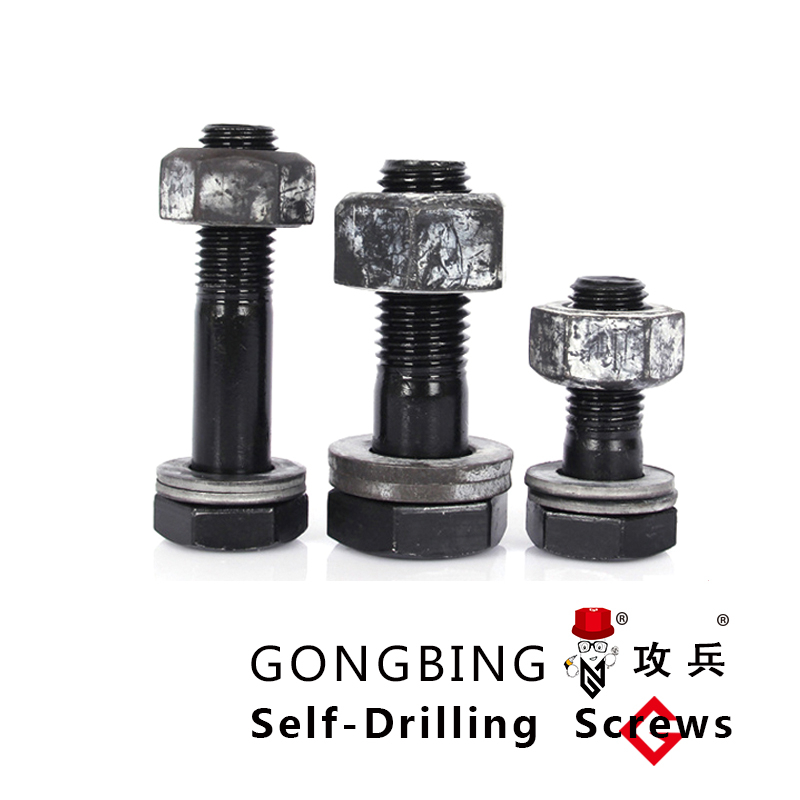Understanding the Importance of Shield Anchor Bolts in Construction and Infrastructure Projects
Understanding Shield Anchor Bolts Importance, Applications, and Installation
Shield anchor bolts, often simply referred to as shield anchors, are a vital component in the construction and engineering industries. These unique fasteners are designed to connect structural elements to concrete and masonry surfaces, providing the necessary strength and stability required for various applications. This article delves into the significance, applications, and installation best practices of shield anchor bolts.
What are Shield Anchor Bolts?
Shield anchor bolts consist of a bolt with a cylindrical shield that expands when the bolt is tightened. The design allows for a secure fixation within a drilled hole in concrete or masonry without the need for a through-hole or additional hardware on the other side. The anchor operates by distributing load over a wider area, reducing the risk of concrete failure around the bolt, making it a reliable choice for many construction projects.
Importance of Shield Anchor Bolts
The importance of shield anchor bolts cannot be overstated. They provide substantial load-carrying capacity, which is essential for anchoring heavy equipment, structural components, and safety barriers. Their ability to offer a higher pull-out resistance compared to traditional fasteners makes them ideal for securing items in locations where stability is critical. Furthermore, shield anchors are resistant to corrosion, especially when coated or fabricated from stainless steel, making them suitable for both indoor and outdoor applications.
Common Applications
Shield anchor bolts can be found in a variety of applications across different sectors. Some of the most common uses include
1. Construction Shield anchors are frequently used to attach steel beams, brackets, and posts to concrete structures. They provide the necessary strength to ensure that these components remain securely fastened.
2. Heavy Machinery Installation In industrial settings, heavy machinery requires secure anchoring to prevent movement during operation. Shield anchor bolts are often utilized in these scenarios to provide the necessary hold.
3. Safety Barriers In public spaces, such as parks and parking garages, safety barriers need to be securely anchored to prevent accidents. Shield anchors offer a reliable solution for attaching barriers to concrete surfaces.
shield anchor bolts

4. Signage and Fixtures Many commercial establishments utilize shield bolts to mount signage and fixtures. The robust hold ensures that these items remain stable, even in adverse weather conditions.
Installation Best Practices
Proper installation of shield anchor bolts is crucial for achieving optimal performance. Here are some best practices to follow
1. Choosing the Right Size It's essential to select the appropriate size and type of shield anchor for the specific application. The size will depend on the load requirements and the thickness of the concrete.
2. Drilling Holes Use a hammer drill with a carbide-tipped bit to create holes in the concrete. Ensure that the holes are deep enough to accommodate the anchor's shield.
3. Cleaning the Holes After drilling, clean the holes to remove any dust or debris, as this can impede the anchor's engagement with the concrete.
4. Inserting the Anchor Place the shield anchor into the drilled hole. Ensure that it is seated properly before tightening the bolt.
5. Avoiding Over-Tightening While it’s important to secure the anchor firmly, over-tightening can cause the concrete to crack or the anchor to strip.
Conclusion
Shield anchor bolts are a critical component of many construction applications, providing stability and strength necessary for various structures. Their versatile nature and reliable performance make them an ideal choice for a wide range of uses, from commercial to industrial projects. By adhering to best installation practices, builders can ensure that these anchors perform effectively, contributing to the overall safety and durability of their constructions.
-
Weatherproof Plastic Expansion Anchors for OutdoorНовиниJun.06,2025
-
Sustainability in the Supply Chain: Eco-Friendly TEK Screws ProductionНовиниJun.06,2025
-
Load-Bearing Capacity of External Insulation FixingsНовиниJun.06,2025
-
Double Head Bolts: Enhancing Efficiency in Industrial MachineryНовиниJun.06,2025
-
Corrosion Resistance in Chipboard Screws: Coatings for Wholesale DurabilityНовиниJun.06,2025
-
Butterfly Toggle Bolts : Enhancing Structural ResilienceНовиниJun.06,2025
